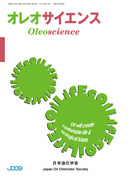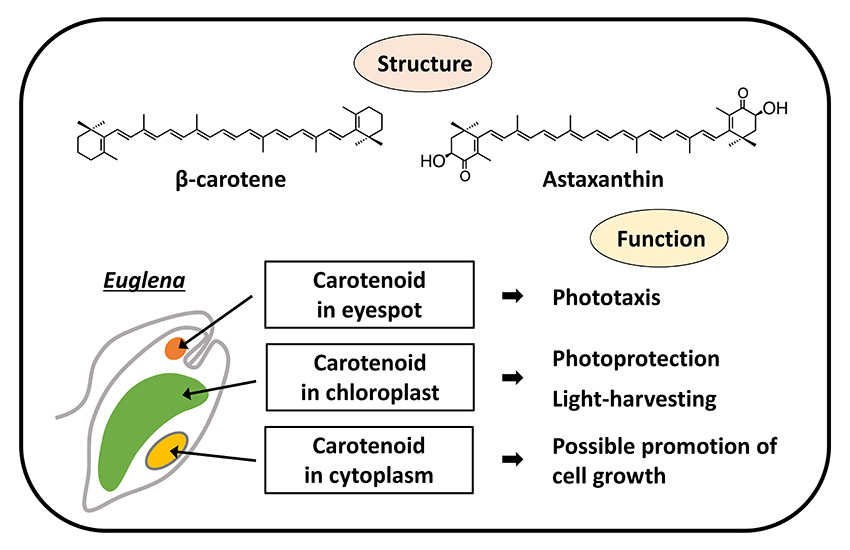
- |<
- <
- 1
- >
- >|
-
[in Japanese]2023Volume 23Issue 2 Pages 64
Published: 2023
Released on J-STAGE: February 04, 2023
JOURNAL FREE ACCESSDownload PDF (485K)
-
Masahiro HAYASHI, Ayako MATSUDA, Shouta TOKAI, Yuino UKEGAWA, Takaki U ...2023Volume 23Issue 2 Pages 65-72
Published: 2023
Released on J-STAGE: February 04, 2023
JOURNAL FREE ACCESSIn various industries, practical utilizations of many microalgae are investigated recently. Many problems are recognized for a practical realization of microalgal industry, such as, a choice of cultivation method, autotroph or heterotroph, an effect of sunlight cycle on algal growth, a balance between cell density and efficacy of photosynthesis, an effects of carbon concentration on the growth, a shape and function of culture tank, practical use of extraction residue, molecular breeding and sterilization of the strains.
Euglena has unique properties for the cultivation among various microalgae. Euglena can grow autotrophically, heterotrophically, or photoheterotrophically. Although each cultivation method has some merit and demerit, the authors focused on the heterotrophy cultivation, Euglena is industrially cultivated in large scale tanks in the dark.
 graphical abstract Fullsize ImageView full abstractDownload PDF (1067K)
graphical abstract Fullsize ImageView full abstractDownload PDF (1067K) -
Masami NAKAZAWA2023Volume 23Issue 2 Pages 73-78
Published: 2023
Released on J-STAGE: February 04, 2023
JOURNAL FREE ACCESSEuglena gracilis, photosynthetic protozoa, adapt to both aerobic and anaerobic culture conditions. When cells are exposed to anaerobic conditions, storage polysaccharide paramylon is degraded rapidly, and wax ester is produced. This metabolic pathway has been called wax ester “fermentation” for a long time. But recent studies showed fatty acid synthesis during anaerobic wax ester production is coupled with the anaerobic respiratory chain. It was the first finding for all organisms that couples long-chain fatty acid synthesis and anaerobic respiratory chain.
 graphical abstract Fullsize ImageView full abstractDownload PDF (635K)
graphical abstract Fullsize ImageView full abstractDownload PDF (635K) -
Shun TAMAKI, Yuki KOSHITSUKA, Tomoko SHINOMURA2023Volume 23Issue 2 Pages 79-86
Published: 2023
Released on J-STAGE: February 04, 2023
JOURNAL FREE ACCESSCarotenoids are hydrophobic pigment molecules that enrich human lifestyle through using as foods, cosmetics, and pharmaceuticals. Carotenoids themselves are biosynthesized in photosynthetic organisms such as plants and algae, and have various photo-related functions involved in photosynthesis and photoprotection. In particular, microalgae such as euglenophytes, diatoms, and dinoflagellates established by secondary endosymbiosis of red alga biosynthesize a wide variety of carotenoids (ex. diadinoxanthin) that are absent in land plants or green algae. On the other hand, carotenoid biosynthesis and physiological functions in photoresponse in such algae has not yet been elucidated. This review focuses on the Euglena gracilis studied remarkably for industrial use among secondary endosymbiotic algae, and we introduce recent progress in carotenoid biosynthetic pathway and carotenoid-mediated photoresponses in E. gracilis.
 graphical abstract Fullsize ImageView full abstractDownload PDF (1795K)
graphical abstract Fullsize ImageView full abstractDownload PDF (1795K) -
Motonari SHIBAKAMI2023Volume 23Issue 2 Pages 87-93
Published: 2023
Released on J-STAGE: February 04, 2023
JOURNAL FREE ACCESSThis review describes a technology regarding SDGs-oriented development using euglenoid polysaccharide (paramylon), expectedly featuring low life cycle CO2, as a starting material. Paramylon-based materials include thermoplastic resins with excellent thermal stability, nanofibers with high aspect ratio, and adhesives with 100% natural composition, etc.
 graphical abstract Fullsize ImageView full abstractDownload PDF (1563K)
graphical abstract Fullsize ImageView full abstractDownload PDF (1563K)
-
Hironori Hondoh2023Volume 23Issue 2 Pages 95-98
Published: 2023
Released on J-STAGE: February 04, 2023
JOURNAL FREE ACCESSDownload PDF (994K)
- |<
- <
- 1
- >
- >|